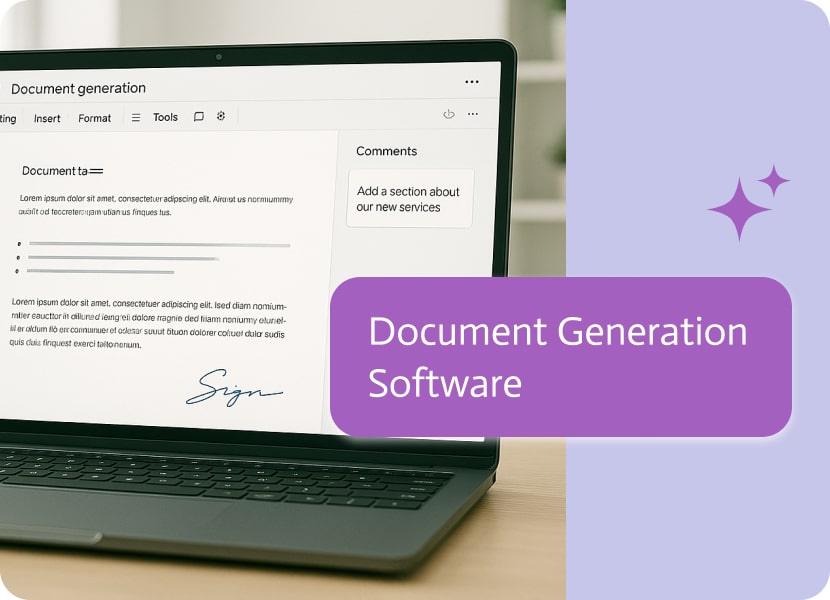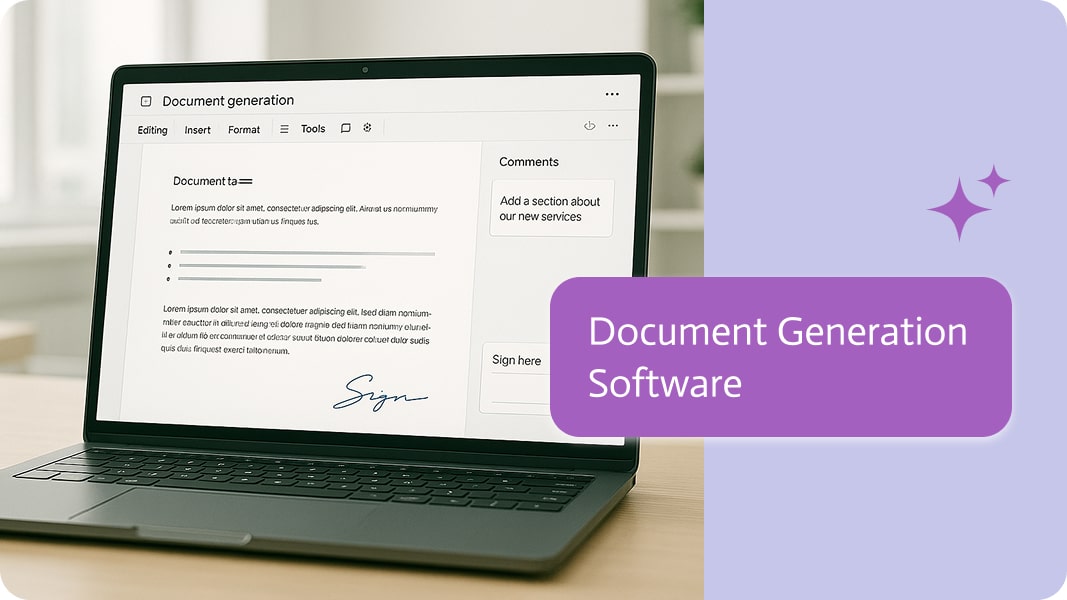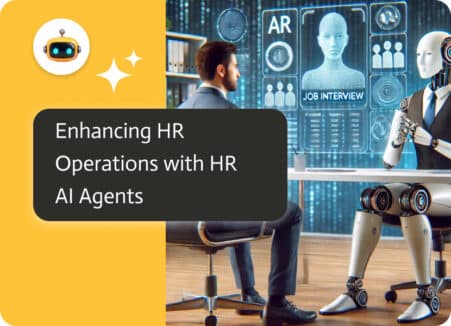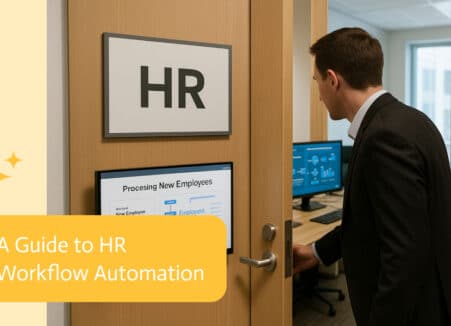

Document Generation Software: How It Benefits Your Company
The engine that automatically transforms your data into completed documents is document generation software. By setting up templates once, connecting your data sources, and letting the software do the rest, you can avoid creating every contract, proposal, invoice, or report by hand from scratch. It’s similar to having a dedicated assistant who can create a hundred documents in the time it takes you to create one, never forgets to update the client name, and never makes copy-paste mistakes.
However, intelligence is what sets genuine document generation software apart from simple mail merge tools. New solutions are able to comprehend your data relationships, apply business logic instantly, connect to several systems at once, and produce documents that change according to the situation.
They’re making decisions about what content to include, which terms to apply, and how to structure information based on rules you define once.
What Makes Document Generation Software Actually Work?
Templates That Think
Everything begins with the template, but not all templates are made equal. Simple templates only have fields that are filled in; they are static. Logic is built into smart templates.
Consider a proposal for a sale. Everyone sees the same sections of a static template. A clever template is aware that small businesses are more concerned with speedy setup and support, while enterprise clients require a specific section on data security and compliance. It is aware that clients in the healthcare industry require HIPAA language, whereas clients in the financial services industry require different regulatory disclosures. Pricing tables are modified according to contract duration, payment history, and volume tiers.
Developers were once required to write code using this conditional logic. These guidelines can be set in plain language by business users using modern document generation software: “If annual contract value exceeds $100K, include executive sponsor terms” or “If customer location is California, add state-specific employment clauses.” These instructions are converted by the software into the reasoning behind document variation.
In order to make every generated document appear as though it was created by the same expert design studio, templates also preserve your company’s branding ideals, fonts, colors, logos, spacing, and legal disclaimers.
Data Connections That Actually Connect
This is where AI-powered data mapping becomes crucial. Point the software at your CRM, and it discovers accounts, contacts, opportunities, and all their custom fields.
It understands that opportunities belong to accounts, contacts relate to multiple opportunities, and line items nest under orders. You don’t write queries or build middleware, the system figures out your data architecture and lets you drag what you need into your templates.
When you need data from several systems in a single document, that’s when the true power emerges. Account information from your CRM, product specifications from your inventory system, pricing from your ERP, and purchase history from your order platform may all be pulled into a customer proposal. All four systems are queried simultaneously by good document generation software, which then combines the information to create just one, unified document with all the information in its proper place.
Generation That Happens Anywhere
Creating documents in the 21st century doesn’t call for you to abandon your usual routine and go to a different portal. No matter where your team already works, the best platforms incorporate generation capabilities.
Sales representatives use Salesforce opportunity records to directly create proposals. Finance teams use NetSuite to initiate invoice batches. Using their HRIS, HR professionals generate employment packets. Project managers use their work management system to generate status reports. Through the tools people use on a daily basis, the document generation engine operates in the background.
Batch processing is also important. At the end of the month, 300 invoices must be generated. The software generates all 300 documents with the accurate information for every customer after you select the records, choose the template, and click once. territory reports at the end of each quarter for your whole sales team? The same procedure. Do all employees in a particular department, location, or role receive copies of the employee policy? completed in a matter of minutes.
You won’t need to maintain distinct document solutions for each team or system thanks to this “deploy once, access everywhere” architecture. You can access your data from any location with a single template library and generation engine.
What Separates Great Document Generation Software?
Speed Without Shortcuts
Generating documents fast is easy if you don’t care about quality, accuracy, or compliance. Great document generation software is fast AND bulletproof.
Every document containing real-time data includes the most recent information, such as pricing, inventory, and account status, rather than what was available when the spreadsheet was last updated. Sales teams can create proposals during discovery calls, finance can reply to invoice requests right away, and executives can obtain reports as soon as they request them thanks to instant generation.
However, accuracy cannot be sacrificed for speed. To prevent documents from being sent out with missing data, incorrect calculations, or broken formatting, the software must have verification policies, data inspections, and mistake management. In order to know precisely which template version produced which document, with what data, and when, version control is required.
Additionally, the most effective platforms manage multiple aspects without becoming slow to use. They generate documents as quickly as simple letters, even with hundreds of line items, interconnected data structures, multiple conditional sections, and aggregated data from many different systems.
Security That Respects Reality
Your most private information is impacted by document generation software, including contract terms, pricing structures, financial records, employee information, and customer data. Security is a must.
Data should be protected throughout the platform’s connection to your systems, processing of template logic, document generation, and output delivery.
Access controls are important for governance as well as security. With the proper authorization, marketing can develop blueprints, legal can approve language, operations can control data connections, and end users can produce documents. Administrators can see exactly who is doing what, and no one is granted more access than is necessary for their role.
Flexibility That Grows With You
Your document needs will change. New document types, new data sources, new business rules, new compliance requirements, new teams wanting access. Document generation software should adapt without requiring complete rebuilds.
It should be simple to grow template collections. It shouldn’t be necessary to start from scratch when adding a new document type; you should be able to swiftly deploy, edit sections, change logic, and clone pre-existing templates. Existing template updates ought to take effect immediately and not cause any downstream issues.
System connections ought to scale similarly. It should be simple to integrate an API or add a new data source. As your monthly document generation volume increases from hundreds to thousands to tens of thousands, the platform should be able to handle new data structures with ease, handle increasing data volumes, and maintain performance.
User adoption needs flexibility too. Some teams want to design their own templates with minimal IT involvement. Others want centralized template management with strict governance. Great software accommodates both approaches without forcing everyone into the same workflow.
Why Document Generation Software Isn’t Optional Anymore
Because Manual Document Generation Creates Technical Debt
Your operations are accruing technical debt with each hour your team spends producing documents by hand. Scaling people rather than systems entails:
- Training on document creation procedures is required for all new team members
- Institutional memory and knowledge transfer are necessary for all document types.
- Every time terms, prices, or policies change, all impacted document templates must be located.
- Human error is the root cause of all quality problems, and it gets worse over time.
That operational debt is turned into an asset by document generation software. People transfer their knowledge into business rules and templates. Days of training become minutes. At the template level, updates are made once. Because machines are not distracted, fatigued, or forgetful, quality increases.
Because Customers Can Tell
The unsettling reality is that your clients can tell when you’re sloppy with paperwork. Errors that imply you’re not paying attention, generic proposals that hardly mention their situation, inconsistent formatting, and out-of-date information are all things they notice.
Operational maturity is indicated by professional document generation. Trust grows when all interactions, from the first quote to the last invoice, are precise and specifically catered to the needs of the client. You can tell you’re paying attention when documents include up-to-date information about their account, purchases, and preferences.
The alternative is to compete with businesses that have perfected document generation while you continue to reformat proposals by hand. Who do you think appears more credible?
Because Compliance Keeps Getting Harder
There is only one path for regulatory requirements to go: they must become deeper, more clear, and strictly enforced. Mandatory document requirements are created by industry-specific regulations such as the General Data Protection Regulation for data privacy, SOX for financial reporting, HIPAA for healthcare, and dozens of others. These requirements are subject to constant change.
Manual compliance is a futile endeavor. Individuals tend to forget which disclosure corresponds to which type of document. They fail to keep up with changes to the regulatory language. They don’t always follow the rules. In an attempt to demonstrate that you did everything correctly, audits turn into archaeology projects.
Compliance is encoded into your templates by document generation software. After the template has been approved once by the legal and compliance teams, all generated documents automatically contain the appropriate terms, disclosures, and language. Correct application of jurisdiction-specific requirements is ensured by conditional logic.
Document Generation With Noca AI
As a result, document generation software is no longer an indulgence but rather an absolute must, and Noca AI was created to meet this need. It applies business logic you define in plain language, maps your data intelligently without complicated configuration, connects to more than 500 systems, and creates documents from any location where your teams collaborate.
Noca can process thousands of documents at once or handle a single document. It scales with your company, produces audit trails, and upholds brand standards. Above all, it is powerful enough for enterprise complexity while still being usable by business users. Without becoming technical experts, your operations manager, HR specialist, or sales coordinator can produce elaborate documents.
Noca is all about total control, not just automation. You control what documents are created, who can create them, what information is included, and how they change depending on the circumstances. You keep total control over your document operations while Noca manages the complexity.
The Bottom Line
Document generation software transforms documents from a cost center into a competitive edge. It eliminates manual labor that doesn’t scale, confirms accuracy to protect profits, strengthens compliance to minimize risk, and provides the necessary speed.
The question isn’t whether your business *needs* document generation software, but whether it can afford to *continue without* it. Waiting only results in more manual work, more preventable mistakes, scalability issues, and a disadvantage when going against competitors who automated years ago.
Smart technologies like Noca are created for instant value, minimal setup, and fast deployment. You can simply select a document type, connect your data, design your first template, and start generating.


